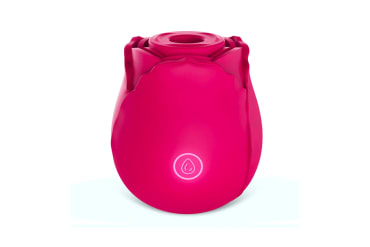How Practicing “Pelvic Rest” Can Help You Recover From A Yeast Infection Faster

Assistant Beauty & Health Editor
Assistant Beauty & Health Editor
Hannah Frye is the Assistant Beauty Editor at mindbodygreen. She has a B.S. in journalism and a minor in women’s, gender, and queer studies from California Polytechnic State University, San Luis Obispo. Hannah has written across lifestyle sections including health, wellness, sustainability, personal development, and more.

Image by Michela Ravasio / Stocksy
October 7, 2023
We carefully vet all products and services featured on mindbodygreen using our
Our selections are never influenced by the commissions earned from our links.
It’s time to talk about yeast infections—because plenty of people get them, and they’re no fun to go through alone.
The CDC reports that an estimated 1.4 million people visit the doctor yearly for yeast infections. Most of the time, they are treated with antifungal medication, but the recovery period can still be a few days. Turns out, your lifestyle choices can actually extend that healing time, hence why you should consider following a “pelvic rest” protocol following a yeast infection.
Here’s what this looks like and how it could help speed up your recovery.
What is pelvic rest?
“Yeast infections are caused by an overgrowth of Candida yeast, which can lead to itching, burning, and discomfort. Pelvic rest is necessary when you have a yeast infection because it helps prevent further irritation and infection in the genital area,” says Jill Krapf, M.D., a board-certified gynecologist who specializes in female sexual pain.
The protocol is fairly simple: Your lifestyle choices should give your pelvic area some time to recover from the infection without being bothered.
You’ll want to consider pelvic rest during the following times as well, Krapf says:
- After gynecological surgeries or procedures to allow the surgical site to heal
- During pregnancy, especially if there are complications like placenta previa or a history of preterm labor
- To manage certain STIs or bacterial vaginosis
- Following a miscarriage or abortion to prevent infection and allow the uterus to heal
- In the cases of vaginal bleeding, pelvic pain, or signs of threatened labor
However, pelvic rest isn’t as simple as it sounds and may be slightly different for each occasion. Here are three things to avoid in the name of pelvic rest during yeast infection recovery.
1.
Reduce your sugar intake
You may not have thought your diet played a role in vaginal health, but it most certainly does—especially when you have an infection. Of course, you’ll want to consume a balanced diet in general, but sugar may be one element to monitor while healing your yeast infection.
“Reducing sugar intake is advised because sugar can promote the growth of yeast,” Krapf says. By creating a less favorable environment for yeast to thrive, you’ll support your body’s natural healing process.
If you’re prone to recurrent yeast infections, you may consider watching your sugar and limiting intake when you feel an infection starting to arise as well to prevent the infection from growing or reduce its severity.
2.
Stay out of baths, pools, & hot tubs
Next, we have swimming—of all kinds. “Baths and hot tubs are not recommended when you have a yeast infection or other conditions requiring pelvic rest because they can introduce moisture and potentially irritate the vaginal area,” Krapf explains.
The overarching goal is the same: Create an unfavorable environment for yeast to grow. “Yeast thrives in warm, moist environments, so soaking in water for extended periods could potentially worsen the infection,” Krapf says.
It’s worth noting that your vagina may meet hot and humid environments when tight clothing is worn during exercise, so be sure to change out of your gym clothes ASAP, especially when you have a yeast infection.
But still, it’s not just warm water you should avoid. “Additionally, the chemicals used in pools and hot tubs can irritate already sensitive skin, making it more symptomatic and susceptible to additional skin infections,” she adds.
Moral of the story: wait until you are fully recovered from the infection to resume your favorite water activities. Otherwise, it may exacerbate your symptoms or reinvigorate the infection.
3.
Pause sexual activity
Lastly, we have the most obvious pelvic rest disruptor: Sex—and any kind of vaginal penetration, not just heterosexual penetrative sex. Think sex toys, fingers, oral sex, etc.
“Activities like sex can introduce additional bacteria and irritants to the area, exacerbating the infection and prolonging the healing process,” Krapf says.
Plus, yeast infections also come with some discomfort, and itching and friction will only make that worse. You’ll be happy you waited when your vaginal health is back to normal.
The takeaway
Pelvic rest is a protocol designed to encourage speedy recovery for vaginal health concerns, including yeast infections. Three important habits to avoid are overdoing sugar consumption, swimming or sitting in a bath, and engaging in sex before you’re recovered. Not sure if you have a yeast infection? Here’s a list of signs to look for.








